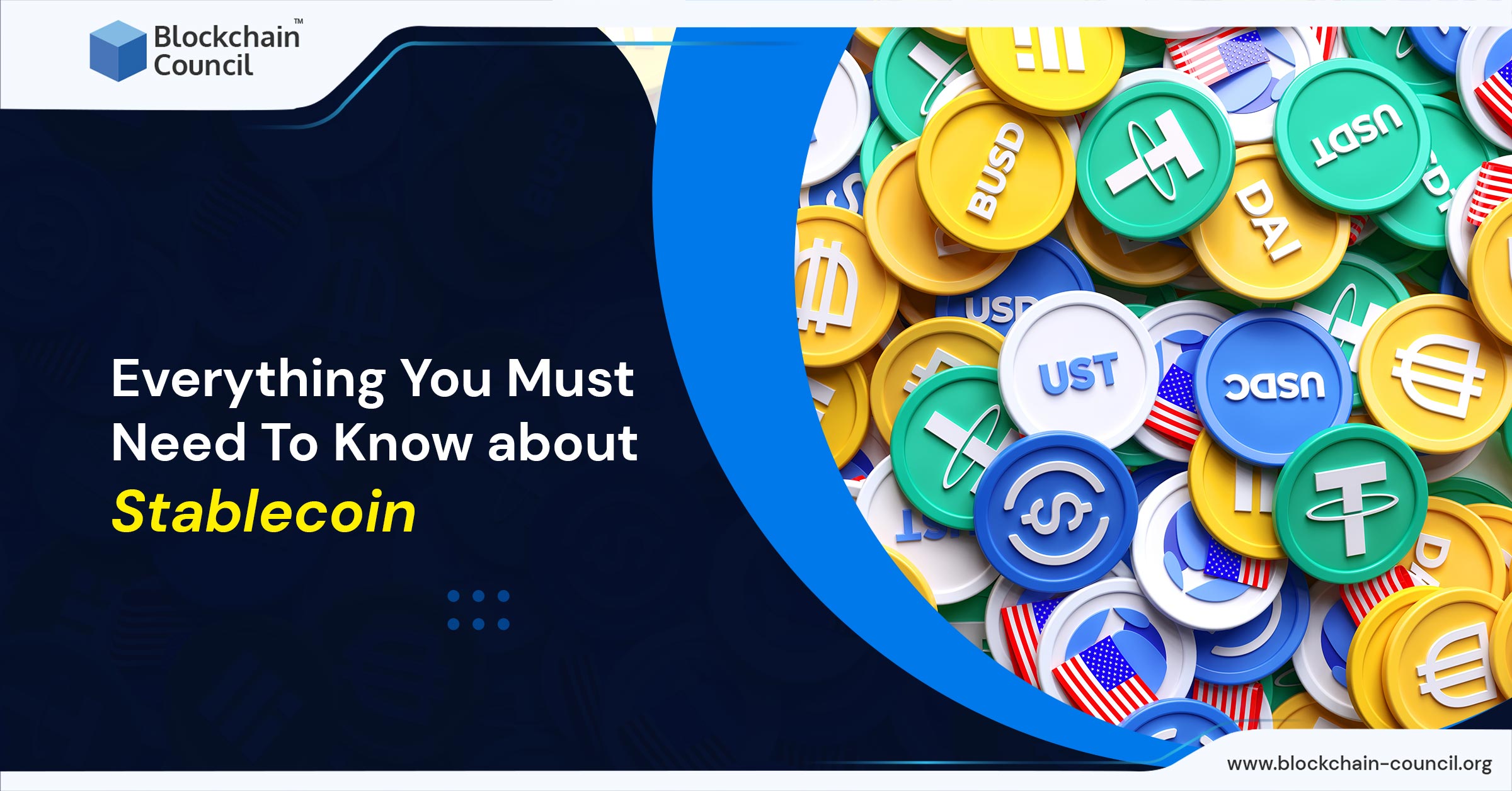
- Blockchain Council
- August 03, 2022

Did you do the market research? Do you really want to do this? You know about the market dynamics, right? These are some questions your friends might bombard you with if you enlighten them about your crypto investment plans. It’s not their fault to behave like this because we all know how the not-so-notorious world of cryptocurrency works. Unpredictability is one of the most striking charms that pull risk-lovers to the crypto dome. Like any other financial domain, cryptocurrencies come packed with certain perks and limitations. Price fluctuation is nothing new for those who are long investment market players. However, the level of dynamics involved in crypto is undoubtedly on a higher notch than other investment tools.
The concept of paperless money or blockchain-supported currency started with Bitcoin in 2009 when the global economy was at its lowest. Satoshi Nakamoto, the anonymous creator of Bitcoin, launched the project as a substitute for traditional money. Amid a wave of speculation and objections, cryptocurrencies grew into a multi-billion-dollar industry in a decade. Today, the crypto market has over 20,000 different cryptocurrencies under its kitty. With experimentation and innovation, crypto diversified into various variants offering exclusive benefits to the users. This paved the way for the launch of more reliable earning resources such as stablecoins and NFTs.
Stablecoins are like a get-away solution for those investors who want to invest in crypto but have a constant nag for security. These are a particular class of virtual assets pegged against fiat money or other solid resources like gold. As they offer some sort of backup for the invested funds by crypto users, stablecoins have managed to build a strong empire for themselves in the market. Firms are willing to develop full-fledged stablecoin blockchain platform networks to attract investors, while government authorities are turning to them to strengthen their economy. This article is here to help you brush up on your knowledge of stablecoins. We will discuss stablecoins, their working, uses, and other vital facts. So, without much ado, let’s start our expedition:
What is Stablecoin?
In simple words, stablecoins are a more secure version of cryptocurrencies. The asset class is pegged or backed by another financial instrument, commodity, or fiat currency. One can call them a subset of the diverse crypto pool, having blockchain technology as their core infrastructure, just like any other crypto project. The value of one stablecoin, collateralized against the US Dollar, will always be equal to the value of one USD at all times, irrespective of the fluctuations in the crypto sphere.
Cryptocurrency developers designed stablecoins to subside the effect of volatility and security existing in the crypto sphere. As they peg their market price to external resources, stablecoins help to popularize virtual assets by making them more accessible to a broader class of users. Some popular stablecoin projects are Tether (USDT), USD Coin (USDC), Dai (DAI), Binance USD (BUSD), Pax Dollar (USDP), etc. While stablecoins can have any fiat currency as the backend support, USD is the most popular choice. The fiat currency holds a strong position in the global financial realm, making it a lucrative option for stablecoin projects.
Like cryptocurrencies, stablecoins support decentralization and are not under the direct control of a central authority. A currency must serve as a store of value, a medium of exchange, and a stable resource for those who use it. People like to invest in a currency that’s not fiat only when they are sure it will retain its purchasing power. Stablecoins thrive to satisfy the criteria of stability by assuring their users of holding the crypto value steady during market changes.
How do stablecoins work?
Government-backed fiat currencies are known for their stability. They are supported by financially strong agents such as central banks. Stablecoins are pegged against fiat, cryptocurrencies, commodities, or by algorithms. The virtual asset class uses the stability offered by central banking authorities and governments to form reserves in government-backed fiat currencies such as the USD, the Euro, etc. To monetize these reserves, a portion of the funds collateralizing stablecoins are invested in securities like short-term corporate debts and government debts. This ensures that the funds are easily redeemable and profitable.
Different types of Stablecoins
Stablecoins differ based on the mechanism they use for value stabilization. As a result, each category reacts differently to price variations in the market. The three main types of stablecoins available in the market are:
-
Fiat-Pegged and Commodity-Pegged Stablecoins
In this category, stablecoins have support of a reserve comprising fiat currencies such as the USD, Yen, the Euro, etc. The fiat reserve serves as the collateral for the crypto and ensures its security in value. Other assets that qualify as collateral for this purpose are metals like gold or commodities like crude oil. The reserve works under trusted custodians and is subject to regular auditory interventions. For example, USDT and USDC are the most commonly purchased stablecoins pegged against the US Dollar. Another important fiat-collateralized stablecoin is Digix Gold which is pegged against gold.
-
Crypto-Pegged Stablecoins
These stablecoins are pegged against a diverse reserve of cryptocurrencies to sustain price volatility. Crypto-backed stablecoins are also over-collateralized sometimes. Over-collateralized means that the crypto stored in reserve is more than the value of crypto issued to the public. This ensures that the price of stablecoin remains stable. Even if the price of the crypto held in reserve falls, the stablecoins will survive the shock as the collateral value will remain more than the value of the stablecoins. MakerDAO’s DAI is a famous example of this category. The coin is pegged against the USD, though, collateralized by ETH and other cryptocurrencies. The virtual assets support 150% of the total DAI in circulation.
-
Algorithmic Stablecoins
In this category, the value of stablecoins works according to the supply of the coin in the market. This is done via an algorithm or a computer program. There may or may not be a reserve for these stablecoins. TerraUSD (UST) is a popular coin in the algorithmic stablecoin category.
Let’s understand the working of an algorithmic stablecoin network with an example. For instance, we take a new stablecoin pegged to the USD. This means that the value of 1 coin is equivalent to $1. There can be two situations here:
- If the price surges above $1, the demand for the new coin is pretty high. In this case, the algorithm will increase the coin supply to the level where the demand comes in sync with the supply at the pegged price.
- If the price falls below $1, the demand is less than the supply. The algorithmic program will reduce the volume of the coins in circulation until the supply meets demand at the pegged USD price.
How to use Stablecoins?
-
Everyday activities
Stablecoins can support day-to-day transactions with ease. The use of blockchain technology makes them a perfect choice for mainstream operations. As a reserve secures them, holders can use them for a plethora of activities with the belief that their purchasing power will remain intact in the future as well.
-
For an easy switch
Investors can use stablecoins as a reliable resort during unfortunate market changes. They can switch from crypto to stablecoin while executing a transaction to safeguard the value of the virtual assets. For instance, if a BTC owner senses a fall in the asset value, then they can easily trade their BTC holdings for a stablecoin to ensure the safety of their investment. An efficient cryptocurrency expert advisor will always urge you to choose stablecoins as a part of your investment portfolio. This can help you to cover up the losses when other volatile crypto assets fall steep.
-
Safety from a Fiat Crash
In the case of a local fiat currency downfall, investors can exchange their holdings with USD-pegged or gold-pegged stablecoins. This will reduce the aggravating depreciation pooling on their savings. Stablecoins thrive as a safe resource for tackling price fluctuations in the market.
Risks Associated with Stablecoins
- Fiat-pegged stablecoins are often restrained and impacted by the regulatory controls imposed by the government on fiat money.
- For stablecoins, the traders have to put their trust in the centralized working system of the exchanges. They have to trust them even if the exchanges fail to provide audit reports to them.
- An economic slump can bring down the value of fiat-pegged stablecoins and fiat as the two are closely tied together in this system.
- The liquidity of commodity-collateralized stablecoins is relatively low. As a result, investors find it difficult to redeem them.
- The return on investment is low in comparison to other financial tools.
Popular Stablecoins To Invest in 2022
-
USD Coin (USDC)
Launched in 2018, USDC is a fiat-backed crypto that is pegged to the US Dollar. The project is managed by Circle and Coinbase exchange via their brainchild named Centre Consortium. The team proposes to have a perfect mix of cash and cash equivalents alongside the US Treasuries in reserve to peg the stablecoin. USDC stands at number 4 in market ranking.
-
Binance USD (BUSD)
The stablecoin project is the product of the world’s largest crypto exchange in terms of market cap, Binance. It is approved by the New York State Department of Financial Services. The market rank of BUSD is 7 as per the latest Coinmarketcap report.
-
Tether (USDT)
Launched in 2014, Tether serves as one of the oldest stablecoin projects in the domain. The project has a strong reserve of cash and cash equivalents to support the stablecoin volume in circulation. It grabs the third spot in market ranking.
-
Dai (DAI)
DAI is a crypto-pegged stablecoin. It is pegged to the USD but is also backed by Ethereum’s native currency ETH. Introduced in 2015 by MakerDAO, DAI has managed to sustain a progressive growth chart. It ranks 12 in the stablecoin market space.
-
Pax Dollar (USDP)
The project appeared in August 2021 as a potential stablecoin option for investors. The market rank of USDP is 52 as per Coinmarketcap. It is regulated by the New York State department of Financial Services.
-
Digix Gold (DGX)
The coin uses gold as the collateralized reserve asset for stabilizing the price of the stablecoin. 1DGX is equivalent to 1 gram of gold. The gold is stored in a Singapore vault and is subject to regular auditory checks for security purposes. It has a market rank of 1536 on Coinmarketcap chart.
Conclusion
Stablecoins offer the much-needed security and assurance to the investors who fear the volatility existing in crypto. They are pegged against secured assets, commodities, and algorithms to ensure that the purchasing power of the currency continues to have relevance in the long run. The market offers a wide range of stablecoins for investors to choose from. The constant support from government authorities is working as a potential catalyst for the stablecoin expansion. So, if you are interested in crypto, then stablecoins can be your safe partner to begin the expedition.
If you want to learn more about cryptocurrency trading and related concepts, then Blockchain Council can be your perfect partner. The platform offers a wide range of courses that allow users to learn crypto trading procedures and terminology easily. The participants get practical training exposure also which helps them to sharpen their trading skills.





































































 Guides
Guides News
News Blockchain
Blockchain Cryptocurrency
& Digital Assets
Cryptocurrency
& Digital Assets Web3
Web3 Metaverse & NFTs
Metaverse & NFTs
